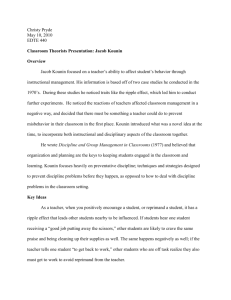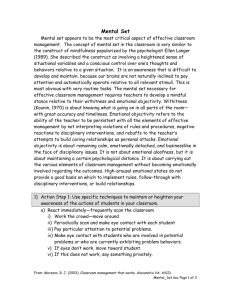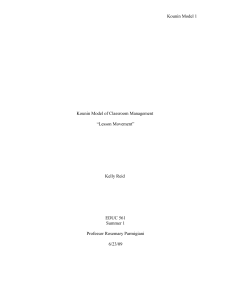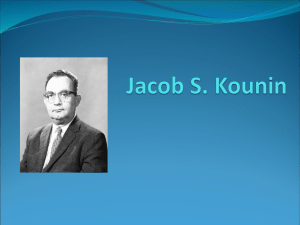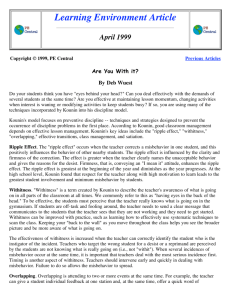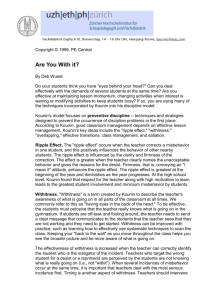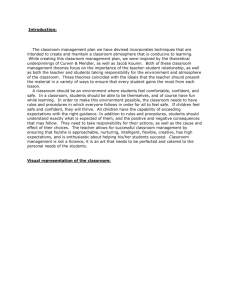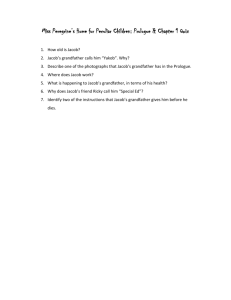Carolyn Testa - Research Paper
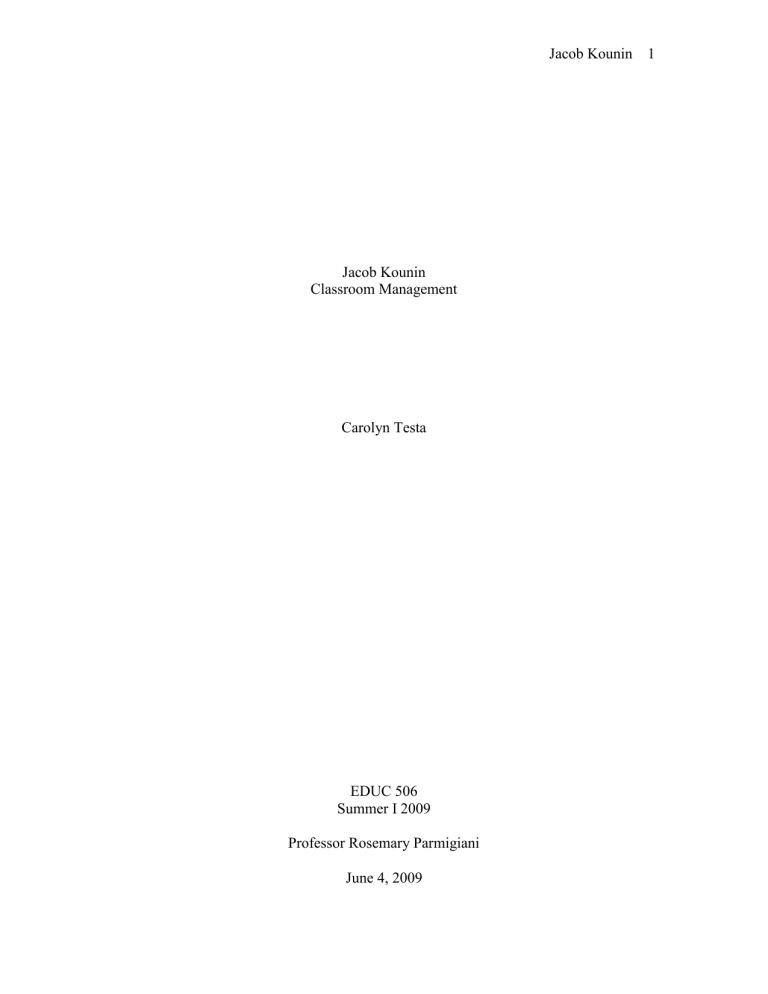
Jacob Kounin
Classroom Management
Carolyn Testa
EDUC 506
Summer I 2009
Professor Rosemary Parmigiani
June 4, 2009
Jacob Kounin 1
Jacob Kounin 2
Jacob Kounin
Classroom Management
This topic is of interest for a number of reasons; whether you are a first year teacher, or if you have been teaching for years. Jacob Kounin’s theories on classroom management are beneficial for a teacher at any point in their career. If not already, we as teachers will face challenges of misbehaving students and the constant struggle of what works best and what can we do to prevent such undesired behavior. Before elaborating on
Kounin’s theories for classroom management, let’s first define classroom management.
According to Vasa (1984) classroom management is defined as managerial behaviors related to maintenance of on-task student behaviors and the reduction of off-task or disruptive behaviors. In a recent article about Jacob Kounin (Whom are We Talking
About: Jacob Kounin,” 2008) it talked about Jacob Kounin, a well known theorist, who is known for two major studies that he did in the 1970’s focusing on classroom management. He originally focused his studies on how teachers handle misbehavior, but it soon developed into another study about what the teachers did in reaction to students’ behavior.
Throughout his studies, he focused on developing theories that were based around teacher’s ability to organize and plan their lessons while using proactive behavior and high student involvement. It all started with a phenomenon which we know today as the
“Ripple Effect”. While Mr. Kounin was in the classroom, he noticed a student in the back of the classroom reading a newspaper, when he asked the student to put away the paper and pay attention, he noticed this spread to the other students who were also misbehaving, thus having a ripple effect in the classroom. From this study he went on to
Jacob Kounin 3 develop five main theories about classroom management: Withitness, Overlapping,
Momentum, Smoothness, and Group Focus.
In another recent article from Wikibooks (“Classroom Management Theorist and
Theories/Jacob Kounin,” 2009) they broke down Kounin’s five theories of classroom management. “Withitness” simply stated is having eyes in the back of your head. It is the teacher’s ability to know what is going on in the class at all times, while also acknowledging misbehavior before it escalates. If you have eyes in the back of your head, you should also have the ability to not just see what is going on but also effectively handle two events at the same time, which is called “Overlapping”. While there may be more then one thing going on in a classroom at a time, the teacher must keep things running smoothly, or what Kounin calls one of his theories as “Smoothness”. With withitness, overlapping, and smoothness, Kounin states the importance of keeping the
“Momentum” in the classroom. The momentum will keep things moving swiftly and on track. Lastly, there is “Group Alerting” or “Group Focus” which keeps the students actively participating while also leaving suspense and interest in the lesson.
Kounin’s five theories for classroom management are important for every teacher to learn and implement. Although teachers may already be using one, two, or even three of these management theories, if used together as a whole, it can create a learning environment that woks well for everyone involved. It almost seems like they should be coined “the golden rules for classroom management”. In every teachers’ career, the focus is the student, but it is also important for the teacher to stay focused themselves. It will always be important for teachers to know what is going on in the class at all times, to multi-task, to keep momentum going, to smoothly transition lessons and finally keeping
Jacob Kounin 4 the students involved. These are lessons for the classroom that will never get outdated.
They are life lessons for every teacher to always keep in the front of their mind.
It is not fair to say that implementing these management styles will create a
“prefect classroom” because it is believed that most children can misbehave despite what strategies are used by the teacher (Kounin & Sherman, 1979). There is no overall teaching style that is equally effective for all classrooms. Different Situations evoke different behaviors by different students and teachers.
I did however get to witness first hand some of Kounin’s theories being put into practice. In observing classrooms, I noticed one particular teacher had a management system in place which prevented unwanted behavior as oppose to simply reprimanding misbehaved students. I have made this observation in the past of how brilliant this idea is and how much it works. Little did I know that weeks later I would be writing a research paper on the man who studied this theory for years. Mr. Kounin’s research shows us that classroom management is not about punishment or control, rather keeping students engaged and keeping the lessons flowing. They are simple ideas put to simple concepts that provide big results.
Jacob Kounin 5
References
Kounin, J., & Sherman, L. (1979). School Environments as Behavior Settings. Theory
Into Practice 3,145.
Vasa, S. (1984). Classroom Management: A Selected Review of the Literature. In R.L.
Egbert & M.M. Kluender, Using Research to Improve Teacher Education: The
Nebraska Consortium (pp. 64-74). Washington, DC: American Association of
Colleges for Teacher Education.
WikiBooks, Wikimedia Foundation, Inc. (2009).
Overview/History of Jacob Kounin’s
Work. Retrieved June 4, 2009, from http://en.wikibooks.org/wiki/Classroom_Management_Theorist_and_Theories/Jacob_
Kounin
WikiEd. (2008). Whom are we talking about: Jacob Kounin. Retrieved June 4, 2009 from http://wik.ed.uiuc.edu/index.php/Kounin,_Jacob
